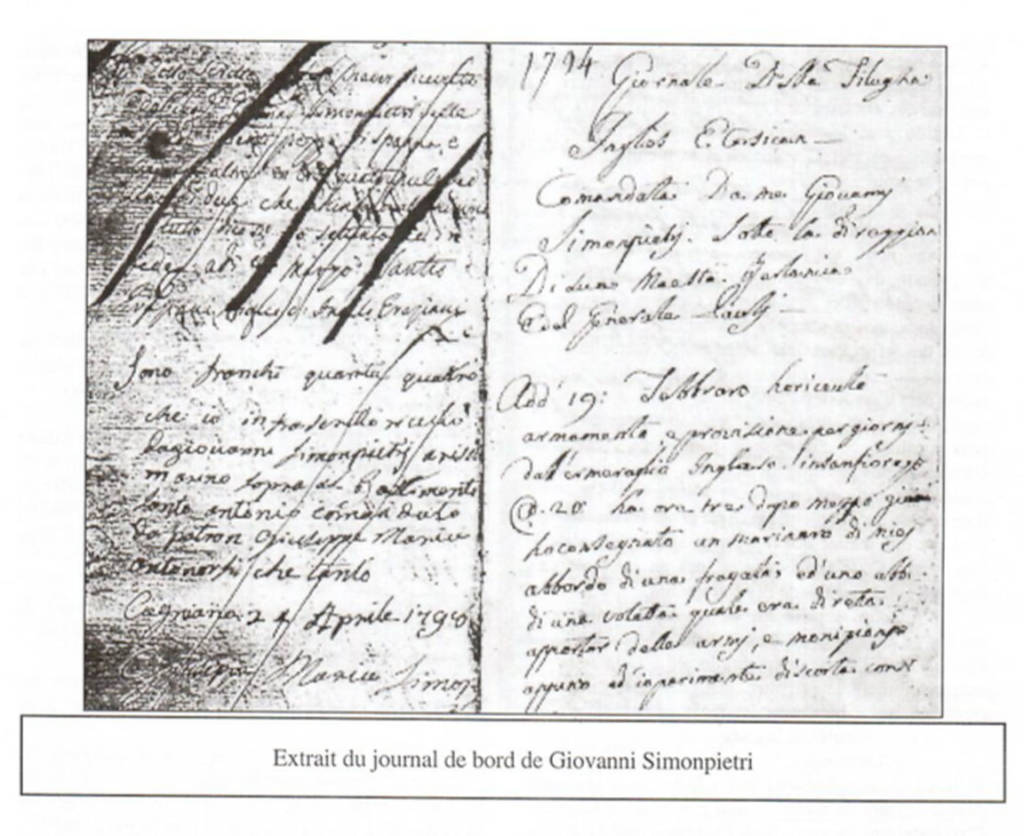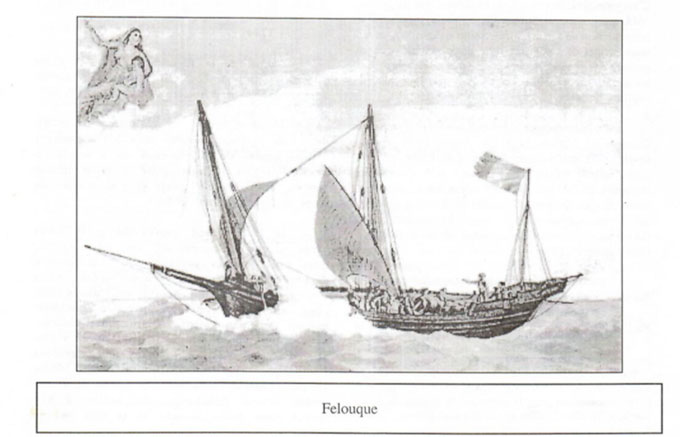Capitain Giovanni Simonpietri
Your visit of Corsica starts with Maison Simonpietri.
Built by the end of 1700, Maison Simonpietri saw the birth of Captain Giovanni Simonpietri from Suare, corsair during the Anglo-Corsican Kingdom (1794-1796).
The heirs of the family of sailors lived there for over two centuries.
In 1998, Mr. Charles Simonpietri, inspired by the family chronicles, mentioned his ancestor corsair Giovanni Simonpietri in the article entitled “Un capitaine corsaire sous le Royaume Anglo-Corse” (A corsair captain under the Anglo-Corsican Kingdom), who had not been included in the publication of 1995: “The corsairs of the Nation under Pascal Paoli” (published by A Cronica – Le Journal de l’histoire du Cap Corse).
Afterwards, his widow reopened the family archives to authors Mattei A. and Liccia J.C. and brought to light a small record book with a simple binding, which happened to be Captain Simonpietri’s logbook. In 2002, they published in A Cronica: “Giovanni Simonpietri de Cagnano: un corsaire capcorsin sous le royaume anglo-corse”.
The logbook

The logbook was written by Captain Simonpietri himself, an unusual fact aboard warships or merchant ships as few commanders knew how to write and this activity was entrusted to scribes.
The easy-to-read handwriting showed a rather imaginative spelling: , such as the addition of the letter H, regularly duplicated consonants, and the redundant use of the term of supito.
On the whole, this form of writing suggested a fiery and impulsive temperament perfectly compatible with the corsair role.
Captain Simonpietri’s logbook is an artifact that, although incomplete, tells us today about the life of a corsair from Cap Corse during one of the most turbulent periods in the history of Corsica: an important testimony of the maritime and political history of the late eighteenth century.
In 1796, six months before the wedding, the captain named his felucca after his beloved, a detail that showed us the man from a different perspective, that of “an intrepid captain who named his warship after his fiancée.”
On February 28, 1797, in Cagnano, he married Maria Caterina Catoni in a civil ceremony performed by her father, Mr. Angelo Catoni from Terre Rosse, who was the municipal magistrate.
One week later, Giovanni Simonpietri performed a wedding ceremony in Cagnano as a “municipal officer,” an evident shift of power within the municipal administration.
Several historical sources indicate that he held top positions within the Municipality of Cagnano and was subsequently elected mayor until 1817.
Between the years 1802 and 1832, Giovanni Simonpietri and Maria Caterina Catoni had eight children.
During the fatal year of 1831, probably due to the cholera epidemic, three of their children died: Maria Caterina, Marianna and Angelo Giuseppe aged 13, 7 and 4.
Pietro Giuseppe, born in 1822, became an eminent architect and he is the only son of Giovanni Simonpietri of whom there is still information.
Extracts from the life
of Giovanni Simonpietri

Born in Suare, a hamlet of Cagnano, Giovanni Simonpietri was baptized on August 9, 1767, and his godparents were the Mayor of Cagnano and his wife.
He was the fourth son of the six children of Paolo Simonpieri and Angela Filippi.
The name of the Simonpieri family without the “t” was recorded in the parish register of Cagnano from 1752. In 1794, Captain Giovanni reported his family name for the first time in the current version of Simonpietri.
As of that year, he was an active corsair of the provisional government of the Corsican Kingdom, then the Anglo-Corsican Kingdom, in the service of King George III.
The names of the shipowners of the corsair ships commanded by Simonpietri are unknown, but the ships were certainly three.
He commanded a felucca, whose name is unknown, in 1794; Santa Devota with a crew of 27 men in 1795; and Santa Maria Caterina in 1796.
Subsequently, Simonpietri was in service from 1800 aboard the “gondole” l’Assomption, obtained the rank of captain in 1802 aboard the “coraline” Sainte Caterine, and according to the merchant navy records his career ended in 1815.
He died in his home in Cagnano on January 24, 1845, at the age of 78.
“We imagine Giovanni during long winter nights next to the fire, surrounded by his children, grandchildren, great-grandchildren, cousins and friends who listened to him tell his adventures on the shores of the Mediterranean, from the Tuscan coast to North Africa, in the most secluded haven of the islets of the Maddalena archipelago, in search of a French corsair, a Dutch ship or a Turkish xebec. He certainly told them about his encounters with Venetian, Neapolitan, Maltese, Genoese and Ragusan (currently Croatian) captains; and also about more significant ones with prominent personalities such as British admirals Hood and Nelson, to whom he had the opportunity to talk.”
We invite you to visit Corsica and make your first stop at his historic house, Maison Simonpietri.

